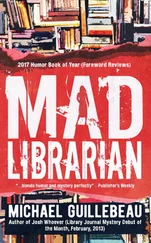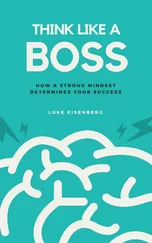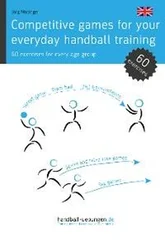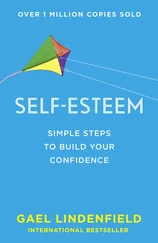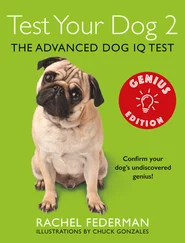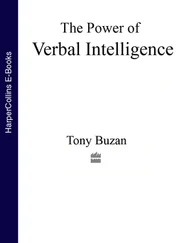The second weakness in the commonly held concept of intelligence is the idea that the verbal and mathematical reasoning skills measured by IQ tests (and SATs) are the sine qua nons of intelligence. This narrow view of intelligence has been thoroughly debunked by contemporary psychological research. In his modern classic, Frames of Mind (1983), psychologist Howard Gardner introduced the theory of multiple intelligences, which posits that each of us possesses at least seven measurable intelligences (in later work Gardner and his colleagues catalogued twenty-five different subintelligences). The seven intelligences, and some genius exemplars (other than Leonardo da Vinci, who was a genius in all of these areas) of each one, are:
 Logical-Mathematical– Stephen Hawking, Isaac Newton, Marie Curie
Logical-Mathematical– Stephen Hawking, Isaac Newton, Marie Curie
 Verbal-Linguistic– William Shakespeare, Emily Dickinson, Jorge Luis Borges
Verbal-Linguistic– William Shakespeare, Emily Dickinson, Jorge Luis Borges
 Spatial-Mechanical– Michelangelo, Georgia O’Keeffe, Buckminster Fuller
Spatial-Mechanical– Michelangelo, Georgia O’Keeffe, Buckminster Fuller
 Musical– Mozart, George Gershwin, Ella Fitzgerald
Musical– Mozart, George Gershwin, Ella Fitzgerald
 Bodily-Kinesthetic– Morihei Ueshiba, Muhammad Ali, F. M. Alexander
Bodily-Kinesthetic– Morihei Ueshiba, Muhammad Ali, F. M. Alexander
 Interpersonal-Social– Nelson Mandela, Mahatma Gandhi, Queen Elizabeth I
Interpersonal-Social– Nelson Mandela, Mahatma Gandhi, Queen Elizabeth I
 Intrapersonal (Self-knowledge)– Viktor Frankl, Thich Nhat Hanh, Mother Teresa
Intrapersonal (Self-knowledge)– Viktor Frankl, Thich Nhat Hanh, Mother Teresa
The theory of multiple intelligences is now accepted widely and when combined with the realization that intelligence can be developed throughout life, offers a powerful inspiration for aspiring Renaissance men and women.
In addition to expanding the understanding of the nature and scope of intelligence, contemporary psychological research has revealed startling truths about the extent of your potential. We can summarize the results with the phrase: Your brain is much better than you think. Appreciating your phenomenal cortical endowment is a marvelous point of departure for a practical study of Da Vincian thinking. Contemplate the following: your brain
 is more flexible and multidimensional than any supercomputer.
is more flexible and multidimensional than any supercomputer.
 can learn seven facts per second, every second, for the rest of your life and still have plenty of room left to learn more.
can learn seven facts per second, every second, for the rest of your life and still have plenty of room left to learn more.
 will improve with age if you use it properly.
will improve with age if you use it properly.
 is not just in your head. According to renowned neuroscientist Dr. Candace Pert, “… intelligence is located not only in the brain but in cells that are distributed throughout the body … The traditional separation of mental processes, including emotions, from the body is no longer valid.”
is not just in your head. According to renowned neuroscientist Dr. Candace Pert, “… intelligence is located not only in the brain but in cells that are distributed throughout the body … The traditional separation of mental processes, including emotions, from the body is no longer valid.”
 is unique. Of the six billion people currently living and the more than ninety billion people who have ever lived, there has never, unless you are an identical twin, been anyone quite like you. Your creative gifts, your fingerprints, your expressions, your DNA, your dreams, are unprecedented and unique.
is unique. Of the six billion people currently living and the more than ninety billion people who have ever lived, there has never, unless you are an identical twin, been anyone quite like you. Your creative gifts, your fingerprints, your expressions, your DNA, your dreams, are unprecedented and unique.
 is capable of making a virtually unlimited number of synaptic connections or potential patterns of thought.
is capable of making a virtually unlimited number of synaptic connections or potential patterns of thought.
What happens to your brain as you get older? Many people assume that mental and physical abilities necessarily decline with age; that we are, after age twenty-five, losing significant brain capacity on a daily basis. Actually, the average brain can improve with age. Our neurons are capable of making increasingly complex new connections throughout our lives. And, our neuronal endowment is so great that, even if we lost a thousand brain cells every day for the rest of our lives, it would still be less than 1 percent of our total (of course, it’s important not to lose the 1 percent that you actually use!).
This last point was established first by Pyotr Anokhin of Moscow University, a student of the legendary psychological pioneer Ivan Pavlov. Anokhin staggered the entire scientific community when he published his research in 1968 demonstrating that the minimum number of potential thought patterns the average brain can make is the number 1 followed by 10.5 million kilometers of typewritten zeros.
Anokhin compared the human brain to “a multidimensional musical instrument that could play an infinite number of musical pieces simultaneously.” He emphasized that each of us is gifted with a birthright of virtually unlimited potential. And he proclaimed that no man or woman, past or present, has fully explored the capacities of the brain. Anokhin would probably agree, however, that Leonardo da Vinci could serve as a most inspiring example for those of us wishing to explore our full capacities.
Baby ducks learn to survive by imitating their mothers. Learning through imitation is fundamental to many species, including humans. As we become adults, we have a unique advantage: we can choose whom and what to imitate. We can also consciously choose new models to replace the ones we outgrow. It makes sense, therefore, to choose the best “role models” to guide and inspire us toward the realization of our potential.
Leon Battista Alberti (1404–1472) was the original uomo universale and one of Leonardo’s “role models.” Architect, engineer, mathematician, painter, and philosopher, Alberti was also a gifted athlete and musician.
So, if you want to become a better golfer, study Ben Hogan, Jack Nicklaus, and Tiger Woods. If you want to become a leader, study Winston Churchill, Abraham Lincoln, and Queen Elizabeth I. And if you want to be a Renaissance man or woman, study Leon Battista Alberti, Thomas Jefferson, Hildegard von Bingen, and best of all, Leonardo da Vinci.
In The Book of Genius Tony Buzan and Raymond Keene make the world’s first objective attempt to rank the greatest geniuses of history. Rating their subjects in categories including “Originality,” “Versatility,” “Dominance-in-Field,” “Universality-of-Vision,” and “Strength and Energy,” they offer the following as their “top ten.”
10. Albert Einstein
9. Phidias (architect of Athens)
8. Alexander the Great
7. Thomas Jefferson
6. Sir Isaac Newton
5. Michelangelo
4. Johann Wolfgang von Goethe
3. The Great Pyramid Builders
2. William Shakespeare
Читать дальше
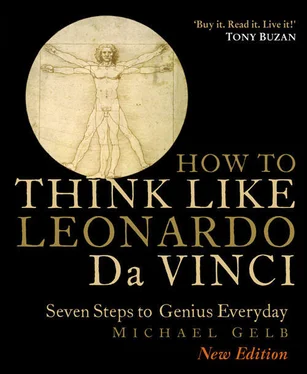
 Logical-Mathematical– Stephen Hawking, Isaac Newton, Marie Curie
Logical-Mathematical– Stephen Hawking, Isaac Newton, Marie Curie
